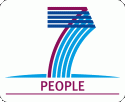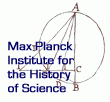The Library of Emmanuel Ximenez
With the establishment of the Plantin Press and other publishing houses in the late sixteenth century, Antwerp became one of the largest centers of the book trade in northern Europe. As a consequence, private libraries became increasingly common not only among members of the political and religious elite, but also among merchants, physicians and other learned men. In early seventeenth-century Antwerp, private libraries are documented for several contemporaries of Emmanuel Ximenez, including the burgomaster and humanist Nicolaas Rockox (1560-1640), the notary Gillis de Kimpe (d. 1625), the merchant-banker Simão Rodrigues d'Evora (1543-1618), the physicians Jean Ferreux (d. 1620) and Luis Nuñes (1553-1645), and the artist Peter Paul Rubens (1577-1640). Among them, the book holdings of Emmanuel Ximenez (with over 950 books, in addition to approximately 60 manuscripts and some legal decrees and declarations) were the largest. Ximenez's library was three times the size of the first 'public' library of the city of Antwerp, the first catalogue of which was completed by Aubertus Miraeus in 1609 (the Bibliothecae Antwerpianae primordia). Interestingly, Emmanuel Ximenez donated to that library the four-volume work Hispania illustrata, a collection of writings on Portugal and Spain compiled and published by the Antwerp Jesuit Andreas Schott in Frankfurt from 1603 to 1608.
Several members of the Ximenez family, including Fernão and Emmanuel, participated in the book trade and, in turn, supported the publication projects of the Plantin printing house with generous loans. The records and accounts kept by Plantin's successors clearly indicate that Emmanuel purchased a great deal of his books via the Plantin press. However, Emmanuel also bought from other booksellers and at the Frankfurt fair, as reflected in the Meir house inventory's listing of several copies of Frankfurt catalogues ("un pacquet avec diversi catalogues diverse Kundmaren Francofurti"). Under the manuscripts there are also references to catalogues of his own books ("Catalogus librorum cavalleria Emmanuel Ximenez"; "Scripta Anglica Emmanuel Ximenez").
Ximenez's library reflected the "universal knowledge of the sciences," attributed to him by the glassmaker and alchemist Antonio Neri (1576-1614), who was Ximenez's guest from 1604 to 1611. Ximenez's collection of books was housed together in a specifically designed and furnished space located above the sitting room, which was still fairly unusual at this time. The room also contained several mathematical instruments, globes, and maps – objects of inquiry that reinforced and complemented the acquisition of knowledge through books. From furnishings and decoration, and the number of the writing tables and chairs available in that room, we may conclude that it served as an informal meeting place for like-minded visitors and guests. Also mentioned are a "copper image of Mercury," the god of trade, commerce, and wealth, as well as the three dried "Indian" animals – a crocodile, a salamander, and, most probably, an armadillo. Prominent among the maps, which decorated the walls of the room, were a world map and a map of Africa, documenting the family's commercial investments. The objects and images displayed the Ximenez family's Portuguese identity through their links with transnational trade and the knowledge required to participate in a mercantile network that spanned the whole world. The "sixteen counterfeits painted on paper," presumably engravings with portraits of learned men as are documented for other libraries, evidenced his membership in the republic of letters. Also recorded in the inventory are a pelt perfumed with ambergris and a box of white ambergris, a much discussed and sought-after commodity used in perfumery and medicine and considered to have powerful effects on physical and mental well-being.
In the Ximenez-da Vega inventory, books were the only category of items listed by price. The inventory indicates that the books were organized according to both subject and language. Those listed by subject were primarily in Latin and divided into texts on theology, law, astrology and mathematics, history, humanities, books on medicine and surgery, and chymistry. The Leuven scholar Justus Lipsius was also given his own category, with 21 titles mentioned. Those categorized by language were in Italian (including "historici italici" and "medici et chirurgici italici"), French, German, Dutch, Spanish, Portuguese, and English. The rich variety of languages again documents the international network of business and personal relationships in which members of the Ximenez family were engaged. With its emphasis on (al)chemical, medical, astronomical, astrological, and mathematical books as well as on cartography, instrument-making, navigation, and travel, Ximenez's library can be defined as a new type of 'working library' that furthered the acquisition and organization of a broad range of specialist knowledge intimately linked with the family's entrepreneurial activities and commercial interests.
Literature
De Nave, Francine. "A Printing Capital in its Ascendancy, Flowering, and Decline." In Antwerp, Story of a Metropolis: 16th-17th Century. Ed. Jan van der Stock. Exh. cat. Antwerp: Hessenhuis. Ghent: Snoeck-Ducaju & Zoon, 1993. 87-95.
Fabri, Ria, et al. Rockox' huis volgeboekt: De bibliotheek van de Antwerpse burgemeester en kunstverzamelaar Nicolaas Rockox (1560-1640). Exh. cat., Antwerp, Museum Nicolaas Rockox. Brussels: KBC Bank, 2005.
Grafton, Anthony "Libraries and Lecture Halls." Early Modern Science. Ed. Katharine Park and Lorraine Daston. Cambridge: Cambridge University Press, 2006. The Cambridge History of Science, 3. 238-250.
Nelles, Paul. "The Library as an Instrument of Discovery: Gabriel Naudé and the Uses of History." History and the Disciplines: The Reclassification of Knowledge in Early Modern Europe. Ed. Donald Kelley. Rochester, N.Y.: University of Rochester Press. 41-57.


